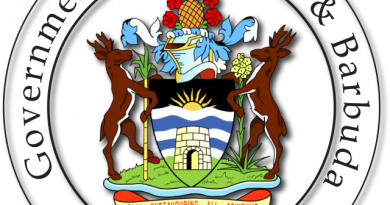March 21 is tsunami-wave drill, and NODS continues to push disaster planning and encourage mobilization by residents
March 21 is tsunami-wave drill, and NODS continues to push
disaster planning and encourage mobilization by residents
The National Office of Disaster Services (NODS) is finalizing plans
for hosting this year’s “Caribe Tsunami Wave Exercise,” or drill, as
enthusiasm builds for the event among the public.
This is according to NODS Preparedness and Response Manager
Anderson Tuitt, who says that businesses and other individuals have
become more aware of the dangers and effects of this type of
disaster and the importance of having a disaster plan.
While there has never been such an event here, the drill puts the
public into a state of preparedness just in case such a system
impacts our shores.
NODS is seeking to have residents – whether in schools, homes,
businesses, or churches – put a disaster plan in place; not only for
tsunamis, but for other natural phenomena, as well, Tuitt says.
Meanwhile, the drill is slated for March 21 at 11 a.m., and residents
are being asked to mobilize their disaster plan.
To take part in the drill, persons are required to register. This is to
facilitate coordination and to monitor the number of persons or
entities participating in the annual activity.
Registration concludes on March 7, but residents can still take part
in the activity even though they are not registered.
This exercise has been running for over 10 years, Tuitt says, and
participants should be aware, by now, of the steps to be taken to get
to higher and safer ground.
That was NODS Preparedness and Response Manager Anderson
Tuitt.
On the day of the drill an alert will go off, notifying the public of a
pending tsunami, and participants are expected to put their escape
plans into action, according to the NODS Manager.
Even if some people do not get the alert on their phones, they should
still act to get to safe and high ground, he notes, as they should be
ready for the exercise. And sirens are another alerting mechanism
that could be used, as they were during last year’s drill.
Tuitt, who is also responsible for training, says that interest in the
activity is growing, as people are getting to understand tsunamis
and their impacts.




